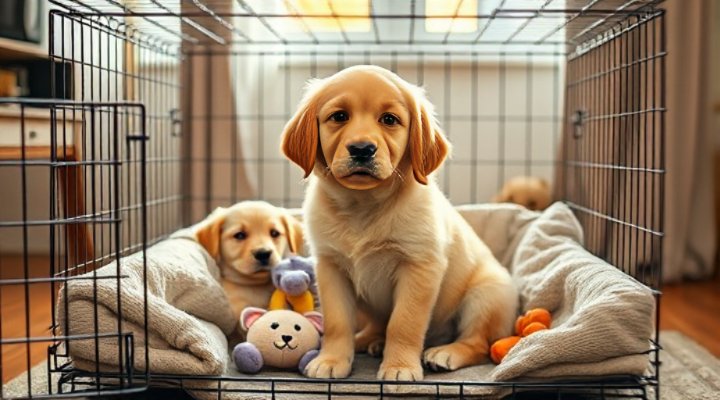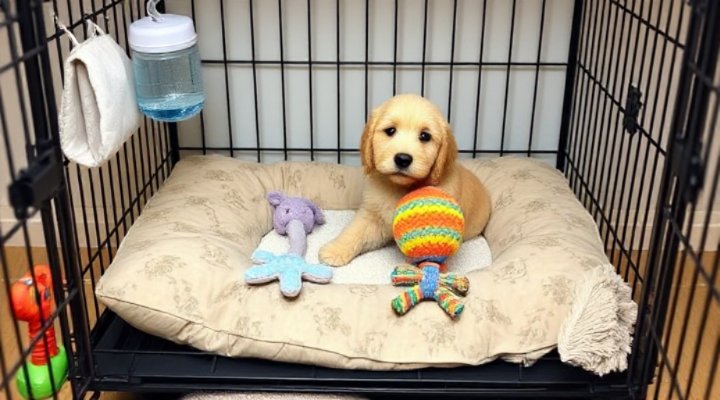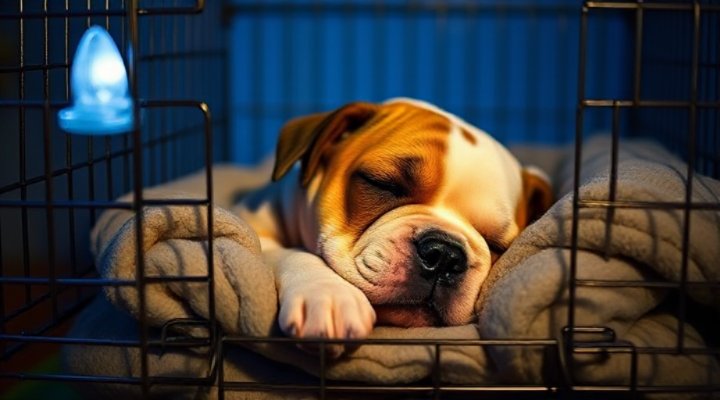Crate training puppy is one of the most valuable skills you can teach your new furry family member. When done properly, it creates a safe space that satisfies your dog’s natural denning instincts while preventing destructive behaviors when you can’t supervise them.

Why Crate Training Your Puppy Matters
Dogs are den animals by nature, meaning they instinctively seek out small, enclosed spaces for security. A properly introduced crate becomes your puppy’s personal bedroom – a place they voluntarily retreat to for naps and relaxation. According to the American Veterinary Society of Animal Behavior, crate training when done positively can significantly reduce separation anxiety.
That being said, crates should never be used for punishment. As we discuss in our step-by-step crate training guide, the key is making the crate an overwhelmingly positive place through gradual conditioning.

Choosing the Perfect Crate for Puppy Training
Not all crates are created equal. You’ll want to consider:
- Size: Big enough for your pup to stand, turn around, and lie down – but no larger
- Type: Wire crates offer visibility while plastic creates a cozier den-like feel
- Location: Place in a quiet but social area of your home
Our puppy crate selection guide covers all these factors in detail. Remember, the right crate makes all the difference in successful puppy crate training.

Step-by-Step Crate Training Process
Stage 1: Introduction (Days 1-3)
Start by placing treats near the crate, then just inside the door. Never force your puppy inside – let curiosity lead the way. Feed meals near the crate, gradually moving the bowl inside over several feedings.
Stage 2: Positive Associations (Days 4-7)
Begin closing the door for short periods while you’re present. Use a special crate-only chew toy to create excitement. According to AKC, stuffed Kong toys work wonders for this purpose.
Stage 3: Duration Building (Week 2)
Gradually increase crate time from 5 minutes to 30 minutes while you’re home. Our science-backed training methods emphasize keeping sessions positive and ending before your puppy gets anxious.

Common Crate Training Mistakes to Avoid
Even with good intentions, many owners accidentally create negative crate associations. Watch out for these pitfalls:
- Using the crate for punishment
- Leaving puppy crated too long (maximum 3-4 hours for young pups)
- Responding to every whine (which teaches them whining works)
If you’re struggling with excessive crying, our guide to stopping unwanted barking offers helpful crossover techniques.
Making the Crate Irresistible
Transform the crate into puppy paradise with these pro tips:
- Use pheromone sprays designed to calm dogs
- Include an item with your scent (like a worn t-shirt)
- Rotate special crate-only toys to maintain novelty
- Consider a snuggle puppy (with heartbeat) for young pups
Remember, every puppy is different. Some take to crate training immediately while others need more time. Stay patient and consistent, and soon your pup will happily retreat to their personal sanctuary.
Related Keywords
puppy crate training schedule | how long to crate train a puppy | best crate training treats | crate training at night | crate training an older dog | separation anxiety crate training | crate training regressions | travel crate training

